BSD
Shkolim 19a (3)
Adar 18, 5785 – 3/17/25
Short notes on topics discussed.
1 – We began the next הלכה concerning items (money, food etc.) that are found in ירושלים in general and the הר הבית in particular.
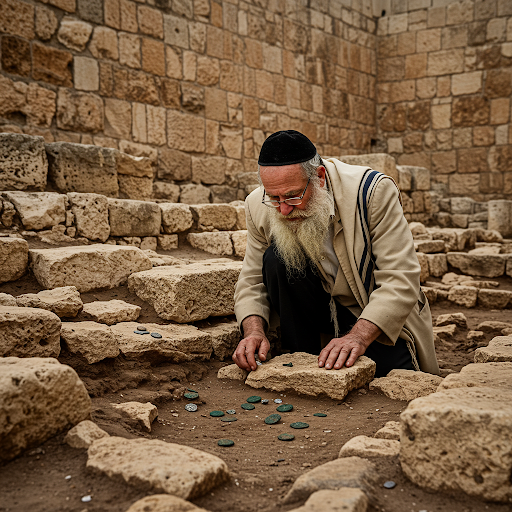
ירושלים was inhabited by locals and of course, hosted many visitors, especially during the ימי הרגל.
Lost items, such as coins, were either חולין or הקדש.
2- The משנה defines three areas where these lost coins may be found. Each area has a different הלכה.
In the city of ירושלים, in the הר הבית and at the animal market place.
מָעוֹת שֶׁנִּמְצְאוּ לִפְנֵי סוֹחֲרֵי בְּהֵמָה לְעוֹלָם מַעֲשֵׂר. וּבְהַר הַבַּיִת חוּלִּין. וּבִירוּשָׁלִַם בִשְׁאָר יְמוֹת הַשָּׁנָה חוּלִּין וּבִשְׁעַת הָרֶגֶל הַכֹּל מַעֲשֵׂר.
MISHNAH: Coins found near vendors of animals always are מעשר money. On the הר הבית it’s חולין money. In Jerusalem, during the remainder of the year they are חולין, during the holidays everything is מעשר .
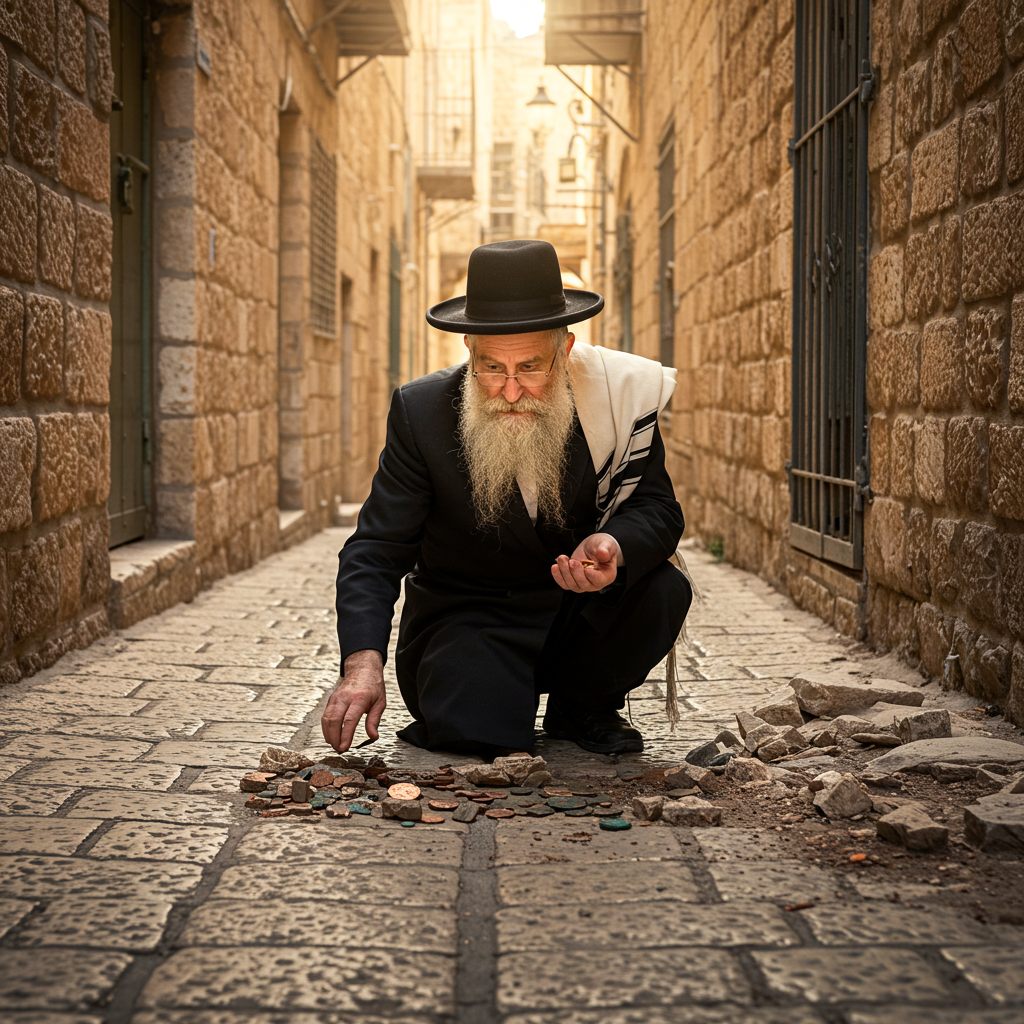
3 – We discussed why coins found near the vendors of animals are assumed to be מעשר, because they probably fell out of the pockets of the buyers.
But why not assume that the sellers lost them? Once these animals are purchased, the money paid to the sellers becomes חולין, so why is the assumption that these lost coins are מעשר money?
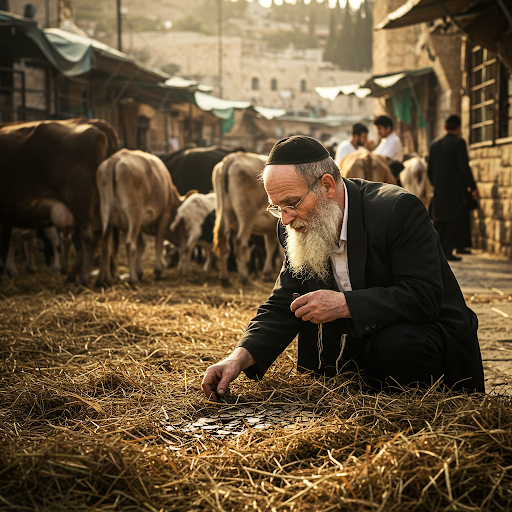
Tosfos in a few places writes that for every animal there were many buyers.
ואור״י דלוקחים הוו רובא דכמה בני אדם עומדים על בהמה אחת לקנות.
We tried to figure the meaning of these words? At the end of the day, all the money was transferred from the buyers to the sellers. So it’s just as logical to say that it fell from the sellers.
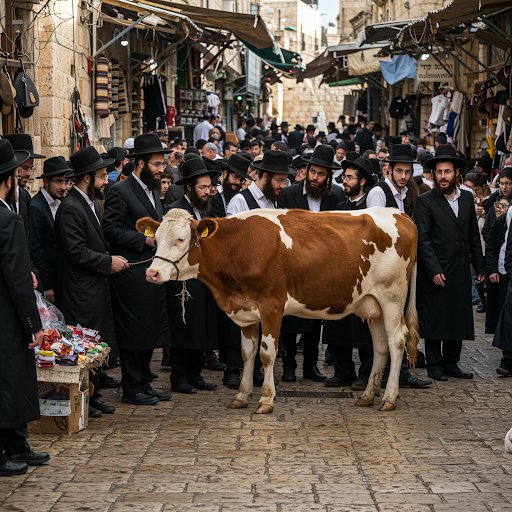
4 -The משנה continues:
בָּשָׂר שֶׁנִּמְצָא בָּעֲזָרָה אֵיבָרִים עוֹלוֹת. וַחֲתִיכוֹת חַטָּאוֹת. וּבִירוּשָׁלִַם זִבְחֵי שְׁלָמִים. זֶה וָזֶה תְּעוּבַּר צוּרָתוֹ וְיֵצֵא לְבֵית הַשְּרֵפָה. נִמְצָא בַּגְּבוּלִין אֵיבָרִים נְבֵילוֹת וַחֲתִיכוֹת מוּתָּרוֹת. וּבִשְׁעַת הָרֶגֶל שֶׁהַבָּשָׂר מְרוּבֶּה אַף אֵיבָרִין מוּתָּרוֹת
Meat found in the Temple courtyard, limbs are עולות and cut pieces are חטאת; in Jerusalem שלמים . In either case it has to lose its shape and be taken out to be disposed of by burning (cannot be eaten).
5 – If at the end of the day, all these pieces of meat needed to be left overnight and then burned, so what bother to figure out what קרבן these came from? Just burn them the next day!

We mentioned a rare רמב”ם in the יד החזקה that explains this משנה.
בשר הנמצא בעזרה איברים עולות וחתיכות חטאות והנמצא בירושלים שלמים הכל תעובר צורתן ויצאו לבית השריפה שמא נותר הוא אם כן מה הועיל שתהיה חזקתו עולה או חטאת או שלמים למי שעבר ואכל אין שורפין את הנותר אלא ביום שנאמר ביום השלישי באש ישרף:
5 – We discussed (also see this Shiur) the issue of money that is found in a Shul. Does the Shul automatically gain ownership because of the money is in its חצר?
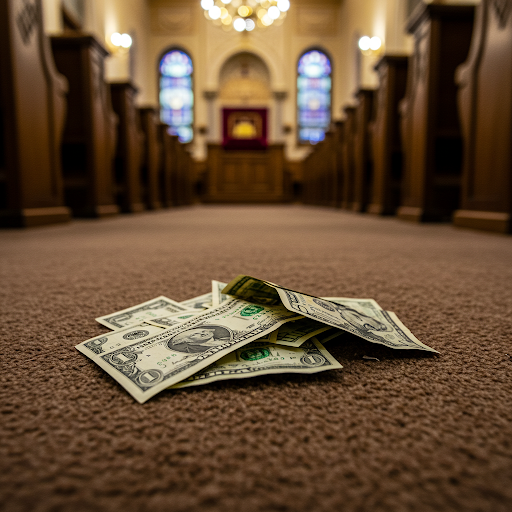
The מגן אברהם says that the Shul is not קונה and quotes our גמרא, that coins found on הר הבית does not automatically belong to הקדש and the money actually becomes הקדש.
————————————————————————
לפני סוחרי בהמות המעות מעשר. לכאורה אולי הם של המוכר והכסף כבר נתחלל? רש”י פסחים (דף זי ע״א ד״ה רוב אוכלי): דאכתי הוי ספק ממי נפלו, וספיקא דאיסורא לחומרא.
תוס’ שם קשיא להו אמאי מחשבינן ליה לספק, נימא סמוך מיעוט הלוקחים במעות חולין לפלגא מעות שביד המוכר, והוי ליה רובא להיתר. ומתרץ ר״י דהלוקחים הוי רובא ‘דכמה בני אדם עומדים על בהמה אחה לקנותה‘. וכן כתבו בבבא מציעא כ״ו ע״א (ד״ה לעולם מעשר).
בהר הבית חולין. מגן אברהם הלכות בית הכנסת (או״ח סי׳ קנ״ד ס״ק כ״ג) מצא דבר בחצר ביה הכנסת זכה בו, ולא אמרינן דחצר ביהכנ״ס קונה להקדש, דחצר קונה משום יד, ואין יד להקדש. וציין המג״א למסכת שקלים פ״ז.
בתוס׳ רעק״א על משניות הקשה אמאי אמרינן בהר הבית חולין, נימא דאף אם כשנפלו היו מעוה חולין זכה הקדש באבידה, מטעם חצר, וציין להקצות החושן (סי׳ ר׳ אות א׳) דשקיל וטרי בזה.
from the קצות above:
מיהו קשה בהא דתנן שקלים פ”ז מעות שנמצאו לפני סוחרי בהמה לעולם מעשר בהר הבית חולין ואמרי עלה בירושלמי דלא חיישי’ לתרומת הלשכה דחזקה אין כהן מוציא מעות מתרומת הלשכה עד שהוא מחללן על הבהמה ע”ש